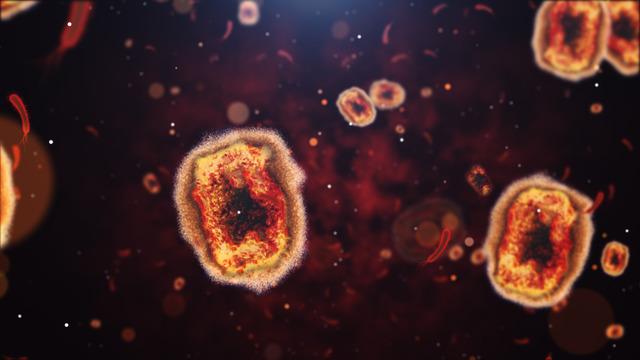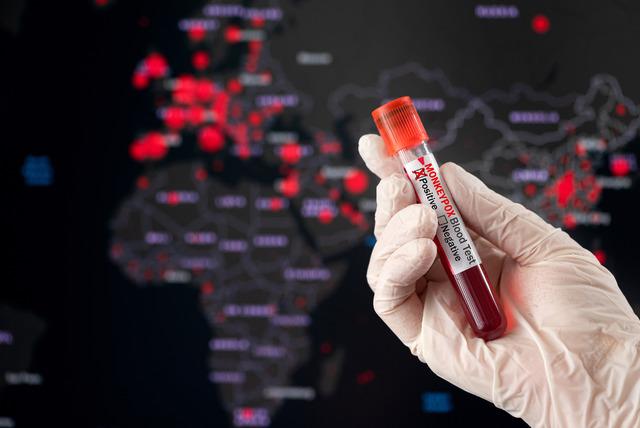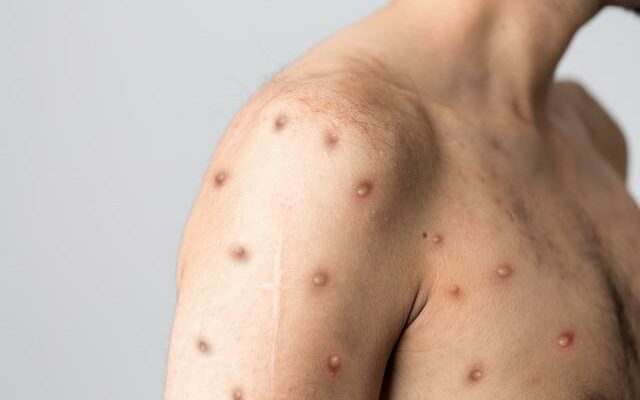As the monkeypox virus spread rapidly in Africa, the World Health Organization (WHO) took the situation seriously and declared a state of emergency. When this development was announced as “breaking” news by international agencies, people turned to search engines, especially Google, to learn questions such as “Monkeypox virus breaking news”, “In which countries and in Turkey is monkeypox present?” and “How is monkeypox transmitted?”
The World Health Organization declared a global emergency against the monkeypox outbreak in 2022.
What is monkeypox virus?
Monkeypox is a zoonotic disease of the Orthopoxvirus genus that is most common in Central and West Africa. It is usually transmitted to humans through direct contact with skin lesions or body fluids from an infected person or animal. Symptoms include fever, headache, swollen lymph nodes, muscle pain, and fatigue. Also common are rashes that typically begin on the face, hands, feet, and mouth, and then develop into fluid-filled lesions.
Since its first recorded history, monkeypox virus has been considered “discriminatory and stigmatizing” due to its name, which has sparked controversy. In response to these concerns, the World Health Organization (WHO) changed the name of the virus to “mpox” in November 2022.
Although the Mpox virus belongs to the same family of viruses as the variola virus that causes smallpox, it is usually milder and rarely fatal. Although it is known as “monkeypox disease,” the exact source of the disease has not yet been determined.
When asked “Who is most likely to get monkeypox?”, it is thought that rodents and primates living in Africa can carry the virus and transmit it to humans. Therefore, Africa is one of the places at risk for monkeypox and the onset of monkeypox.
Although the first human case of M pox was recorded in 1970, the world became widely familiar with this virus with the monkeypox outbreak in 2022. This disease, which usually lasts 2-4 weeks and resolves on its own, presents with symptoms such as fever, itchy skin rash, swollen lymph nodes, and fatigue, and some monkeypox variants can lead to serious health problems.
What are the symptoms of monkeypox virus?
Symptoms of monkeypox virus usually include fever, sore throat, headache, muscle aches, swollen lymph nodes, and an itchy rash. The rash usually starts on the face and spreads to other parts of the body, such as the palms of the hands and soles of the feet.
Monkeypox symptoms include:
- Rashes: Rashes that resemble pimples or blisters on the face, inside the mouth, hands, feet, chest, genital area, or anus.
- Fire
- Swelling of the lymph nodes
- Weakness
- Muscle and back pain
- Headache
- Respiratory problems: Cough, nasal congestion, etc.
- Chills and shivering
With M pox, the rash begins as flat, red bumps that can be painful. These bumps eventually turn into pus-filled blisters that crust over and fall off. This process usually takes 2 to 4 weeks, and a person can still spread the virus to others until the rash is completely gone.

How is monkeypox transmitted?
The most frequently asked questions on this subject are “Is monkeypox contagious?” and “How is the monkeypox virus transmitted?” The monkeypox virus can be spread through skin-to-skin contact with an infected person, such as kissing or sexual intercourse, prolonged face-to-face contact with the possibility of droplet transmission, and the use of items such as clothing, sheets, and towels that have been in contact with the virus. Transmission from animals to humans can occur through skinning, biting, direct contact with the fluids or waste of an infected animal, scratching, or eating the meat of that animal. The virus is more common in small wild animals, especially squirrels, rats, and mice.
Mpox virus can be transmitted through:
- Face-to-face conversation: Breathing in the virus during breathing.
- Skin contact: Skin contact such as touching, kissing, sexual intercourse.
- Respiratory droplets: Spread of droplets through prolonged close contact.
- Contact with contaminated items: Contact with items that have been contaminated with the virus, such as bedding and clothing.
- Mother-to-child transmission: The virus is transmitted to the child through close contact during pregnancy, birth or after birth.
- Animal-borne transmission: Through animal saliva, scratches, bites or consumption of animal meat.
Crowded and closed areas, such as indoor pools, saunas, steam rooms, Turkish baths and jacuzzis used in public, are environments that carry the risk of spreading the disease. It is of great importance that people with suspected illness do not stay in such places, both for their own health and for the protection of others. Especially in common areas such as Turkish baths, close contact with people showing symptoms of illness should be avoided; practices such as foam massage and scrubbing should be avoided. These measures are considered a necessary precaution for both individual and public health.

How is M pox virus diagnosed?
Monkeypox virus can cause symptoms similar to those caused by diseases such as chickenpox, measles, bacterial skin infections, scabies, herpes, and syphilis. Monkeypox is similar to the above diseases in terms of appearance, symptoms, and rashes on the body. Therefore, special tests are necessary to make a correct diagnosis.
The most common method for detecting monkeypox virus is a PCR (polymerase chain reaction) test, which is performed on skin lesions. If there is no wound on the skin and a sample cannot be taken from there, an anal or rectal swab can also be used to test.
You may also be asked for a blood test to determine if your immune system has produced antibodies against the virus.
Is there a treatment for monkeypox?
One of the most important questions when it comes to this disease is “Is there a treatment for monkeypox?” Treatment for the monkeypox virus focuses primarily on relieving symptoms and preventing complications. Although there is no specific treatment for the disease, various approaches can be used to manage symptoms and provide relief to the patient:
- Rest: Adequate sleep and rest are important to help the body heal.
- Fluid Consumption: It is necessary to drink plenty of water to prevent fluid loss that may occur due to fever and rashes.
- Painkillers: Painkillers recommended by your doctor can be used to relieve symptoms such as fever and muscle aches.
- Anti-Itch Creams: Creams recommended by the doctor can be used to reduce itching caused by rashes.
- Antiviral Drugs: Some antiviral drugs developed for smallpox may also be effective in treating monkeypox virus. However, use of these drugs should be done with the evaluation and approval of a doctor.
These treatment approaches can alleviate the course of the disease and contribute to the recovery of the patient. Therefore, the answer to the question of whether monkeypox is temporary is yes.
Is monkeypox fatal?
Although monkeypox virus is generally milder than smallpox, it is possible to experience fatal outcomes, although rare. However, the rate of such cases is very low. Seeing a health care professional quickly when symptoms begin can greatly increase your chances of recovery. Early intervention can positively affect the course of the disease and minimize the risk of complications. Therefore, seeking medical attention immediately when symptoms appear is the key to both protecting your health and speeding up the recovery process.
Important note: This content is not medical advice. The information contained herein is for informational purposes only and should not be used to diagnose or treat any medical condition. If you have a medical condition, please consult a specialist as soon as possible.
